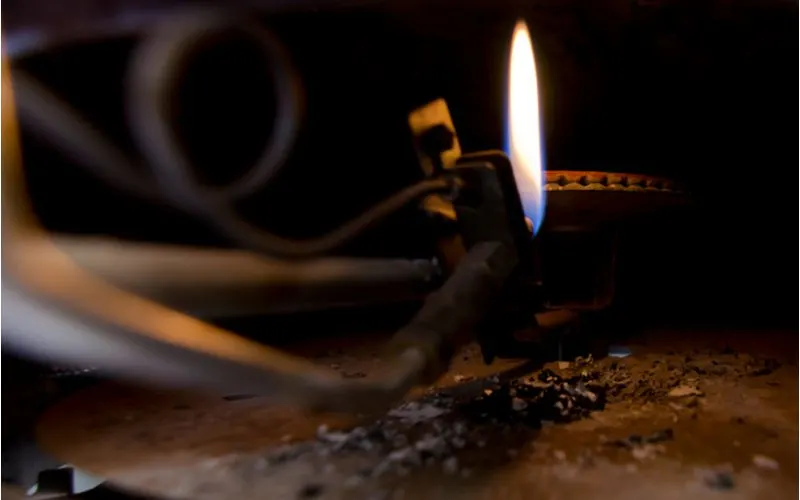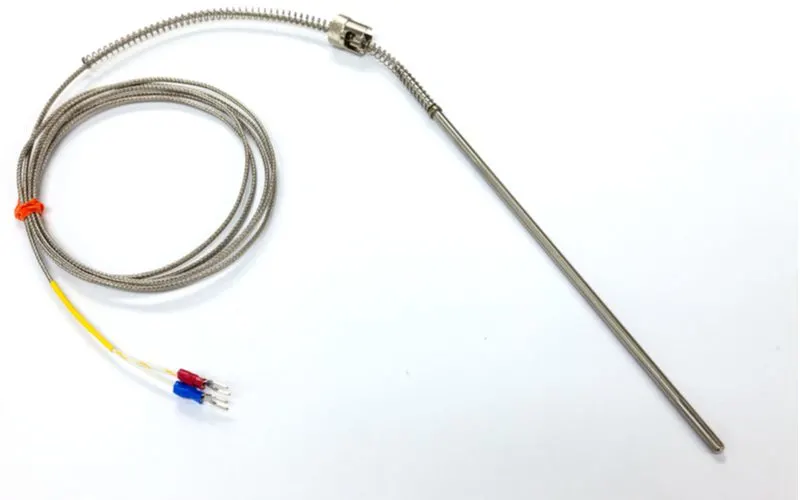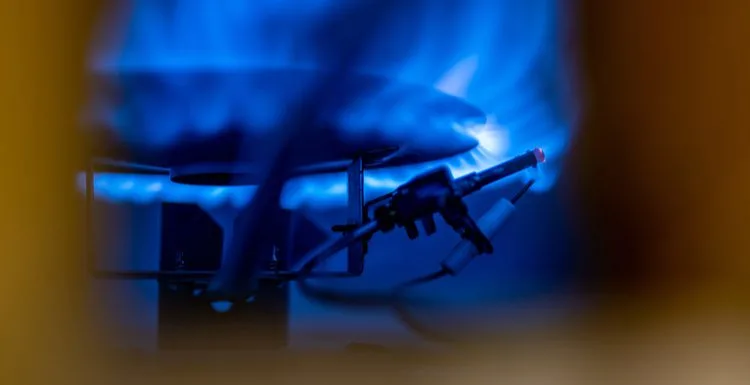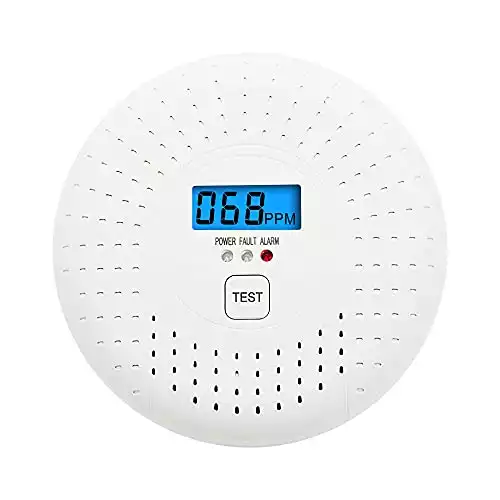If you have a gas or propane-fueled water heater, chances are the pilot light has gone out at some point during its heating operation.
Don’t panic; instead, read this guide to learn the steps to take to relight it.
We partnered with Networx to help you find local plumbers in your area. Click to below to get a FREE quote.
Pilot Light on Water Heater Explained

mdm7807/Shutterstock
A pilot light is a small flame that remains on at all times inside a water heater. It doesn’t warm the water directly. Instead, it acts as a match or lighter, helping to ignite the main burner, which then heats the water.
If the pilot light burns out, the burner won’t be able to light up, leaving you with cold water.
But how do you relight it if it goes off?
Don’t worry; we’ll show you how to get up and running again in our complete guide below.
Common Pilot Light Problems
As stated earlier, one of the signs your pilot light is out is a lack of hot water. That said, the cold-water issue could be due to other reasons, such as the burner not working properly or an interruption in the gas supply.
So you’ll first need to do some troubleshooting. Signs that show the flame has gone out include:
No Flame
If you do a visual inspection through the glass window of the heater, you should be able to spot the flame. No flame means the pilot light is out.
Gas Control Valve Indicator
A gas control valve usually gives error messages or communicates via blinking lights to show any problems that arise with the system.
If the pilot light is out, it’ll indicate the problem using its blinkers, and you can deduce the meaning by reading the sticker with the blinking light error codes on the side of the tank.
What Causes the Pilot Light to Go Out?

LarsZ/Shutterstock
Several factors can cause the pilot light to go off. These are the most common ones:
Damaged Thermocouple
A thermocouple is a safety device responsible for detecting if the pilot light is on or off. If it detects that the pilot light is out, it shuts off the gas flow to the flame so that unburnt gas doesn’t accumulate inside.
Over time, the thermocouple might start to malfunction, and if this happens, it might accidentally shut off the gas supply to the pilot light after detecting it’s off.
Bent or Dirty Thermocouple
Apart from malfunctioning, the thermocouple can accumulate dirt inside, which will hamper its ability to sense the pilot light.
It might also bend away from the pilot light, which will make it difficult to detect the flame. Either way, such a thermocouple will cut off the gas supply to the pilot light, causing it to go off.
Blown Out by The Wind
If your water heater has an open combustion chamber, a wind draft can blow out the flame. Additionally, since the pilot light is a small flame, it might go off if you place the heater near a strong draft.
Change in Gas Pressure
The gas pressure might change from the supply lines, and this can cause the flame to go off (especially if the pressure goes too low).
Lack of Enough Combustible Air
Fire needs fuel and oxygen to burn. If you’ve placed the water heater in an enclosed location, such as in a closet, there might not be enough air to keep the fire burning continuously.
Such a situation is also a safety risk because the gas might not combust fully to release CO2.
Instead, it’ll produce carbon monoxide, leading to CO poisoning, suffocation, and possibly death. You need to place the heater in a well-ventilated location to avoid this problem.
Is It Dangerous If the Pilot Light Goes Out?
It might seem dangerous, but gas water heater manufacturers build safety features into the appliances to deal with such scenarios.
They usually have gas control valves and thermocouples to control and halt the fuel flow if the pilot light goes out.
The only danger is if the flame is not getting enough air. As stated earlier, this scenario can produce carbon monoxide (a poisonous, odorless gas) instead of carbon dioxide.
Even if you place the heater in a well-ventilated space, the only way to know for sure that you are safe is by using a carbon monoxide detector.
Install it close to the heater, and it should alert you if the carbon monoxide levels rise to dangerous levels.
How to Relight a Water Heater Pilot Light
There are two main types of hot water tank systems: sealed and open.
Sealed Combustion Pilot
A sealed combustion hot water tank system encloses the main and pilot light burners to limit access.
There is usually a glass window through which you can view the flame. To relight your water heater, follow these steps:
- Remove the burner compartment cover, which should expose the glass window.
- Try to smell for gas, and if you get that scent, leave the heater for around five minutes for the leaked fuel to disperse. You don’t want an explosion as you try to relight the flame.
- Twist the gas control knob from the “off” to the “pilot” position.
- Press and hold down the control knob to let the gas flow to the pilot light burner.
- Press the electronic ignition button until you hear it click. If there is air in the gas line, you might have to press the button a few times before the pilot light begins burning.
- Confirm visually through the glass window that the pilot light is on.
- Continue holding down the control knob for about a minute to allow the pilot light to heat the thermocouple, which will then confirm ignition to the control module’s thermostat. If you do not give it time, the thermocouple will not heat up, and the flame will go out.
- Release the control knob and confirm through the window that the pilot light is still on.
- Turn the gas control knob from the “pilot” position to the “on” position. If the heater has been out for a long time, the main burner should light up within seconds to heat the water. However, if it was out for a short period and the water had not cooled, the burner would not turn on.
Return the cover, and that’s it! If your light is still not on, move on to the next step.
Open Combustion Pilot
Please note that mixing gas and fire is extremely dangerous. We highly suggest calling a professional plumber to light your pilot light.
Open-combustion hot water tank systems are the older generation of heaters because they don’t have electronic ignitions to spark the flame. Instead, their burner compartment (main and pilot light) under the tank is open and accessible.
This enables you to relight the pilot light using a match or lighter. To do that, you need to follow these steps:
- Remove the burner compartment cover.
- If there is any gas smell, leave it to disperse for around five minutes.
- Turn the gas control knob from the “off” position to the “pilot” position.
- Press and hold the control knob to let the gas flow into the pilot light.
- Use either a lighter, match, or candle to provide the flame required to relight the pilot light. Place this fire source under the orifice of the pilot supply line to ignite the gas.
- Confirm visually if the pilot light has turned on. If on, continue pressing the control knob for about a minute to heat the thermocouple.
- Release the control knob and confirm if the pilot light is still on.
- If still on, turn the gas control knob to the “on” position, then return the compartment cover.
After these steps, if your light continues to go off or doesn’t function properly, you can try the steps below.
What If the Problem Persists?

Meaw_stocker/Shutterstock
When the flame goes out, you only have to relight it using the steps above. However, if it keeps going out, then one of the components is not functioning as required. The most common culprit is the thermocouple.
How To Change the Thermocouple
Luckily, you can change the thermocouple. Here’s how:
- Shut off the gas inlet valve. Turn it quarter-way so that it becomes perpendicular to the gas pipe.
- Remove the burner compartment cover, then unscrew nuts on the gas, pilot, and thermocouple lines to remove the pilot burner assembly.
- Unscrew the damaged thermocouple from the pilot burner assembly and replace it with the new one.
- Fit the pilot burner assembly back to the tank, then reconnect the gas, pilot, and thermocouple lines.
- Reopen the gas inlet valve and check for leaks by pouring a mix of dish soap and water into the joints.
- If there are no leaks, relight the pilot light, and you are good to go.
Once you’ve followed these steps, check again to see if the pilot light comes back on. Note that you might have to call an expert to change the thermocouple when dealing with a sealed tank system.
We partnered with Networx to help you find local plumbers in your area. Click to below to get a FREE quote.
Relighting Your Water Heater Pilot Light
Relighting the pilot light is an easy process that should take you about a minute at most.
Be sure you follow the steps above when dealing with either a sealed or open hot water tank system. And of course, when in doubt, be sure to call a plumber.
They’ll have the experience and tools to get your hot water heater back up and running in no time.



